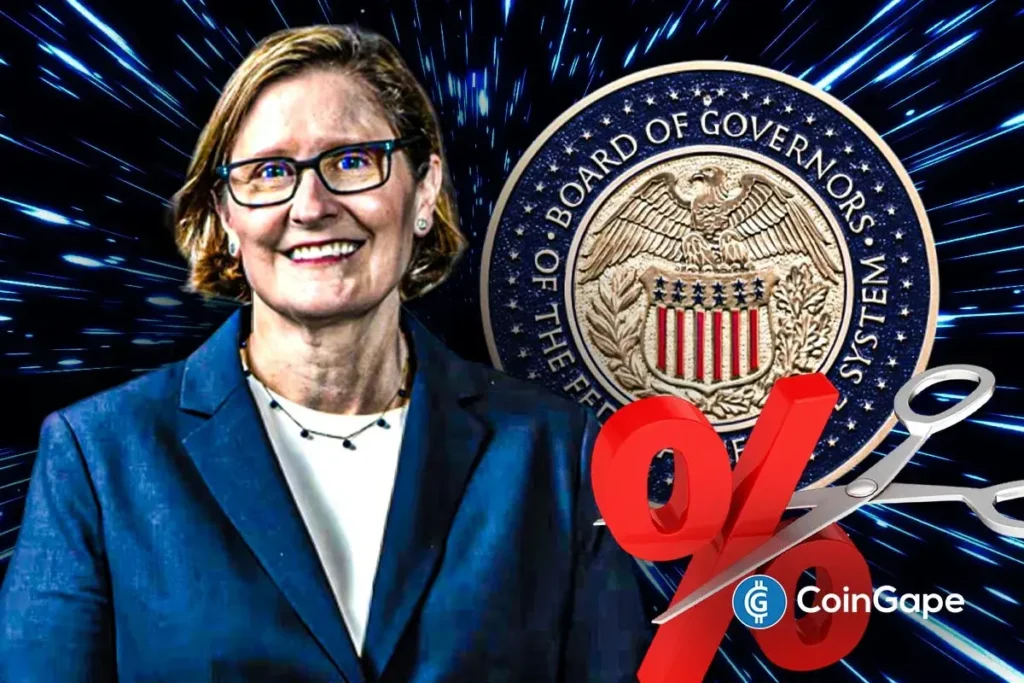Economic Outlook: Fed President Paulson Advocates Rate Cuts Amid Tariff Concerns
In a notable address at the National Association for Business Economics Annual Meeting, Anna Paulson, President of the Federal Reserve Bank of Philadelphia, shared her insights on the current economic landscape while advocating for further Federal Reserve rate cuts in 2023. With the market anticipating another rate cut this month, her remarks underscore the growing sentiment among Fed officials favoring monetary easing to address evolving economic challenges, particularly in the labor market.
Rate Cuts as a Necessary Measure
Paulson emphasized her support for the Federal Open Market Committee’s (FOMC) anticipated monetary policy trajectory, aligning her stance with the median Summary of Economic Projections. She expressed her belief that easing policies, including a recent 25 basis points (bps) cut in September, were appropriate given the current economic indicators. This decision marked the first rate cut of the year and signaled a pivotal shift in the Fed’s approach amid rising concerns regarding labor market conditions.
As reported by CoinGape, Paulson’s endorsement reflects a broader consensus among Fed officials, including Governors Michelle Bowman and Chris Waller, who see the need for two more anticipated cuts of 25 bps each later this year. The collective belief is that proactive measures are warranted to navigate the complexities of inflation and labor market dynamics.
Addressing Inflation and Labor Market Risks
Highlighting the progress made on underlying inflation, Paulson noted that while inflation remains a concern, it is essential to look beyond immediate tariff-induced fluctuations in prices. She acknowledged the rising risks in the labor market, indicating that the momentum appears to be shifting in an undesirable direction. By advocating for rate cuts, Paulson signals a commitment to fostering economic stability and supporting employment opportunities.
The ongoing discourse around labor market health has become increasingly pertinent, especially considering external factors that could further exacerbate challenges. While the Fed’s decisions are often influenced by a range of economic indicators, Paulson’s focus on the labor market underscores the urgency of addressing these issues effectively.
The Limited Impact of Trump Tariffs
In her address, Paulson also addressed the implications of the Trump administration’s tariffs, stating that while they may slightly raise price levels, they are unlikely to have a lasting effect on inflation. This perspective aligns with recent assessments from other Fed officials, highlighting a consensus that tariff-driven price increases have been less impactful than previously projected.
Paulson reiterated that while tariff-induced price upticks could pose challenges, she does not foresee conditions supporting sustained inflationary pressures stemming from these tariffs. Such insights provide a clearer perspective on how the Fed is likely to navigate monetary policy amidst external economic pressures—especially as they relate to trade policies.
Market Reactions and Future Expectations
The anticipation of another rate cut by the FOMC during the upcoming October 29 meeting has contributed to a bullish environment in financial markets, particularly within the cryptocurrency sector. Traders and investors are closely monitoring developments, further fueled by speculation surrounding changes in monetary policy.
The expectation is that this atmosphere of increased liquidity and lowered borrowing costs will support risk-sensitive assets, including cryptocurrencies. As Paulson and others within the Federal Reserve look to calibrate their responses carefully, market participants remain poised to react to shifts in policy and accompanying economic indicators.
Upcoming Insights from Fed Chair Powell
Fed Chair Jerome Powell’s forthcoming speech promises to provide further clarity on the Federal Reserve’s current stance regarding its dual mandate of controlling inflation and fostering employment. With Paulson’s insights already setting the stage for a potential shift in policy, Powell’s remarks will be eagerly awaited by markets and analysts alike.
The interplay between general economic conditions, employment trends, inflationary pressures, and government policies will undoubtedly influence the Federal Reserve’s approach. Investors and economists are keen to gain a comprehensive understanding of Powell’s perspective and how it will affect monetary policy in the months ahead.
Conclusion
As the Federal Reserve navigates a complex economic landscape characterized by tariff implications and labor market uncertainties, Anna Paulson’s insights into the need for further rate cuts resonate with broader sentiments among Fed officials. By focusing on the interplay between inflation, labor markets, and external pressures, the Fed is poised to implement necessary measures in response to evolving economic conditions. As the market anticipates additional rate cuts, all eyes will be on the Fed’s forthcoming meetings and announcements, particularly as they relate to the overarching economic trajectory.


